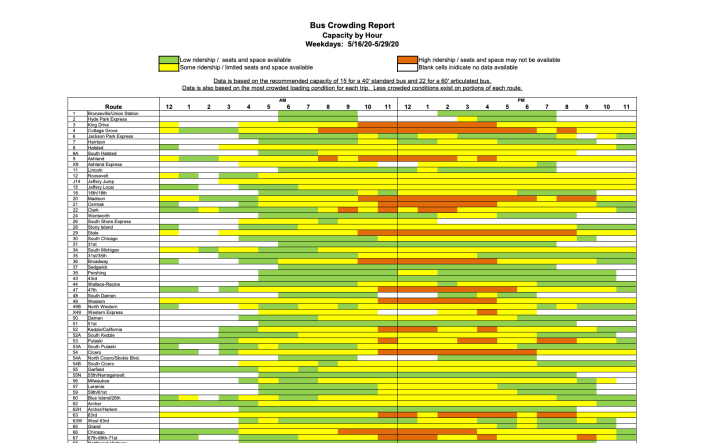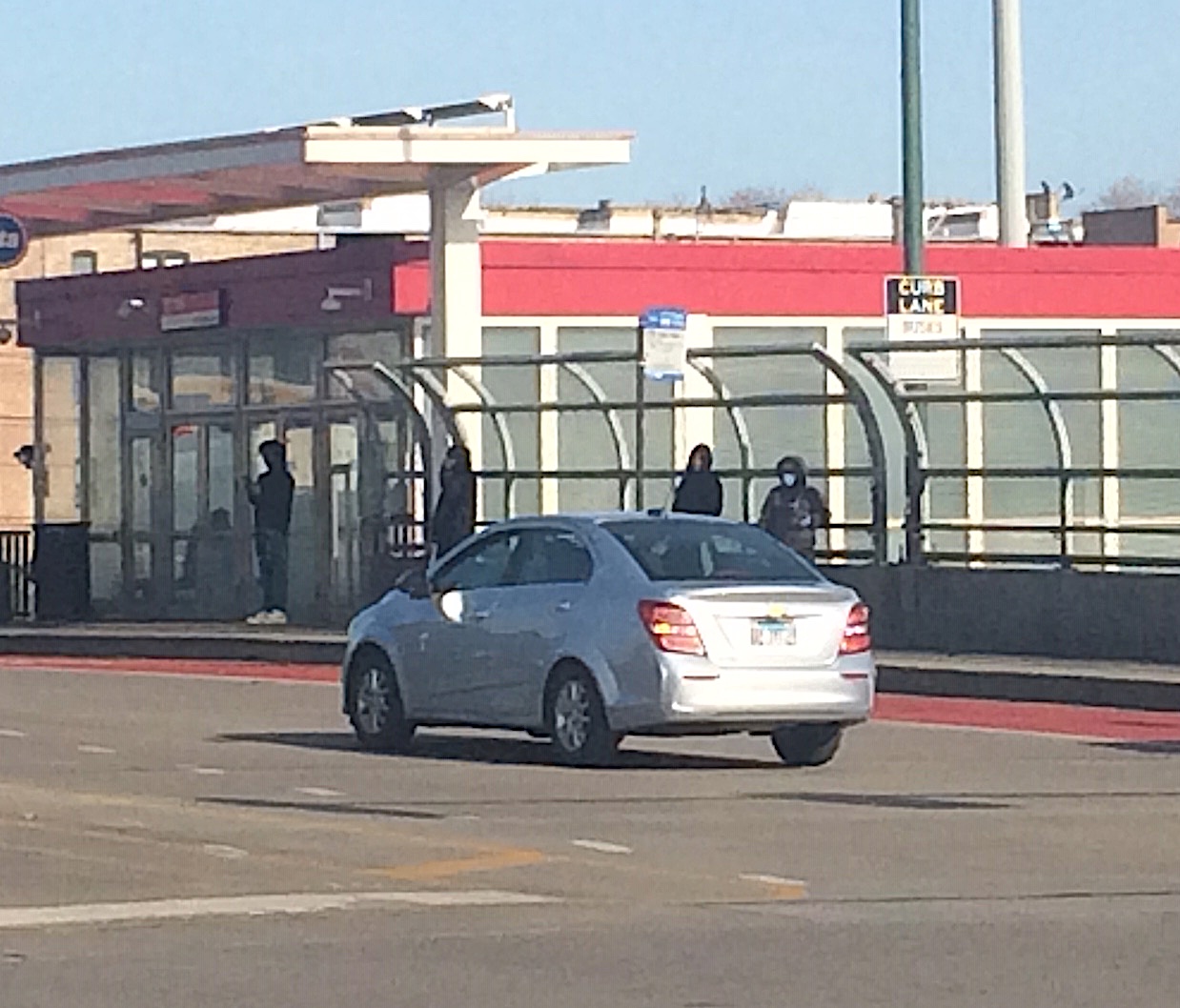Yesterday the CTA launched a Ridership Information Dashboard to give riders a heads-up about crowding issues on bus lines, so that they can make an informed decision when planning their commutes during the pandemic. That in turn should help reduce crowding, which will make riding the bus safer. Read the press release about the dashboard here.
Along with info on bus ridership, the agency has rolled out new signs and stickers in English and Spanish to remind people of the need to wear a mask when using transit and maintain at least six feet distance between themselves and other passengers when possible.
CTA riders can view a spreadsheet detailing bus use on an hourly basis. Ridership and seat availability is shown using a color-coded system that indicates low ridership / lots of available seating (green), some ridership / limited available seats (yellow), and high ridership / very little to no seating available (orange). Availability of seating is based on pandemic capacity limits of 15 riders for standard buses and 22 passengers for articulated buses. (When buses reach those ridership levels, drivers can request authorization to run express.)

Unfortunately there’s no way for riders to know which particular segments of specific bus routes are experiencing crowding. But the tool does provide a rough idea of what passengers can expect. The CTA will update the spreadsheet will on a weekly basis based on ridership from the previous two weeks.
Unsurprisingly, many bus routes that are experiencing crowding are lines that serve the South and West side, home to many lower-income or working-class Chicagoans who don't own cars and/or work essential jobs. Residents in these parts of town also tend to have less access to rail service than people on the North Side.
The CTA advises passengers to avoid boarding crowded buses and instead wait for the next vehicle. The agency states they are adding extra buses along routes that are experiencing crowding such as the #79 79th and the #4 Cottage Grove.
Weekday ridership on the #6 Jackson Express bus really stood out to me. The #6 experienced high ridership roughly between the hours of 7:30 a.m. and 6:30 p.m. Given that people who use this route don't have easy access to rail service, I hope the CTA will add more service to this line, so that the next round of data will show less crowding.
The data for the following routes also indicated that there are long periods of time when there is little-to-no available seating: #3 King Drive, #4 Cottage Grove, #20 Madison, #29 State, #36 Broadway, #47 47th, #49 Western, #54 Cicero, and #66 Chicago. There was lower bus ridership overall on the weekends, but the #4 Cottage Grove still experienced crowding for the majority of the day on weekends.
The data for routes #63 63rd, #87 87th, and #82 Kimball-Homan indicated that these routes experienced crowding for at least four consecutive hours.
And Sunday ridership data showed crowding on the #3 King Drive, #4 Cottage Grove, and #20 Madison for the majority of the day.
Providing information to riders about bus crowding is definitely helpful. It would be great if the CTA could also provide info on 'L' ridership and crowding conditions, although that data may be more difficult for them to collect, because after a customer swipes their Ventra card at a station turnstile, there's no easy way to determine which train they boarded, in which direction, and, in in the case of transfer stops, on which color line.
Real-time information on seating availability on buses and trains, rather than weekly updates, would also be very useful. The CTA states they will be launching a report on rail ridership “soon,” and that there is a long-term goal to provide real-time capacity info.
It would have been even better to hear the CTA announce a partnership with the Chicago Department of Transportation to convert parking or travel lanes on multilane roads into temporary pandemic bus lanes. That would shorten bus trips, reducing the possibility of passengers being exposed to the virus. Last month CDOT chief Gia Biagi told Crain's the department was considering that idea, but there have been no updates since then.
When Coronavirus first appeared in Illinois and Chicago, Streetsblog advocated for bus-only lanes as a safety strategy. That's still a worthwhile idea, so hopefully we'll see action on it soon. For now, it’s great that customers with flexible schedules have data to help them plan their bus trips to reduce their coronavirus risk.




